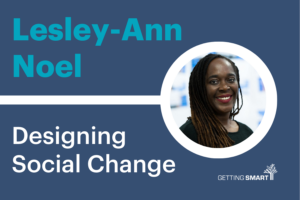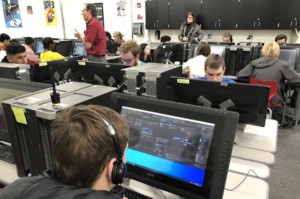Lease vs. Buy

School finance is, in most places, not a rationally designed system. It’s the product of decades of political compromises. One particular problem with the cobbled together system is that districts aren’t well positioned (or incentivized) to make capital expenditures—investments in assets that improve operating productivity.
Districts build and operate schools. They can float a long-term bond to build or remodel a school but there’s often no facility for making short-lived asset purchases like technology. Some wealthier districts can add a tech levy but most schools and districts make haphazard use of grants, programmatic funding, and end of year surpluses (and there haven’t been many of those). Erratic purchasing patterns lead to different computer and software combinations with no plan for regular updating.
Leasing offers the opportunity to rationally manage an asset category like instructional technology. In the Mastering the Moment white paper and in Total Cost of Ownership (TOC) Checklist CoSN suggests that leasing be considered as a means for sustaining refresh schedules—and shifting from every six or seven years to every three or four years.
Leasing levels out the annual expenditure on student and teacher laptops. It’s usually easier for a district to include a regular lease payment in an annual budget than to plan for large expenditures every four years.
Leasing adds a finance change which increases the TCO. Improving refresh schedules may also increase TCO. However, the benefits of hardware/software standardization may offset higher cost of leasing. The low cost of funds makes leasing particularly attractive now.
Plummeting devices prices and open software are making the shift to digital much more affordable. Chromebooks cost about $500 and utilize open resources—the combination is more powerful that loaded laptops costing $1500 just three years ago.
A few school networks use thin client solutions—multiple workstations that share a single processor. For less than $250 per workstation a learning lab can quickly and affordably expand secondary course options for students trying to catch up or move ahead.
Schools considering 1:1 use of $500 laptops can make the full shift using leasing or phase in a purchase plan over three years. Here’s the key—if your school or district has the discipline to phase in a tech plan and manage an annual refresh program that is clearly going to be cheaper than leasing. On the other hand, if you want to shift the whole school (or district) simultaneously and want some certainty on your refresh schedule, then leasing is the way to go.
With leasing, it is important to predict if the equipment will be purchased or returned at the end of the lease. It will be cheaper to accept a ‘fair market value’ buyout at the end of the lease but if parents are likely to buy laptops it is often better to have a defined purchase price at the end of the lease to avoid any confusion.
If you are considering leasing, it’s always a good idea to compare rates, lease terms, fees and options of banks, equipment vendors, and leasing companies.






Tom Vander Ark
Here's a recap from a friend. If you lease, it’s typically over 3 years and if you purchase you normally depreciate over 5 years. For example if you acquired $50,000 of technology and depreciated it over 5 years you would assume a $10,000 per year operating expense but you would use $50,000 of cash – on the other hand if you leased the same $50,000 of technology you may pay $63,000 over 3 years in lease fees which means an annual operating expense of $21,000 per year for 3 years but you protect some cash in the short term plus in year 4 you will have a buyout expense of around $8,000 for a total outlay of $71,000.
Under the above scenario for the Purchased-Depreciated approach your 5 year budget expense is $10,000 per year and you may be able to run it a little longer but for leasing your expense is $21,000 for each of the first 3 years, $8,000 for year 4 and zero for year 5 and you may still be able to use it a little longer.
Interest rates are a function of the stage of organization maturity and financial health; market conditions; management recognition and strength; and negotiation. Early stage companies will either not be able lease without personal guarantees or will pay a premium (25% interest rate)
-Maturing organizations with revenue and a negative bottom line will typically pay an 18% to 25% rate
-Fairly mature organizations with strong revenue and a bottom line approaching positive will typically pay a 12% to 15% rate
-Stable and growing organizations with strong revenue and a positive bottom line will typically pay a 9% to 12% rate (they may not need to lease)
-School Districts, being government organizations, will generally get lower interest rates (5% to 7%)